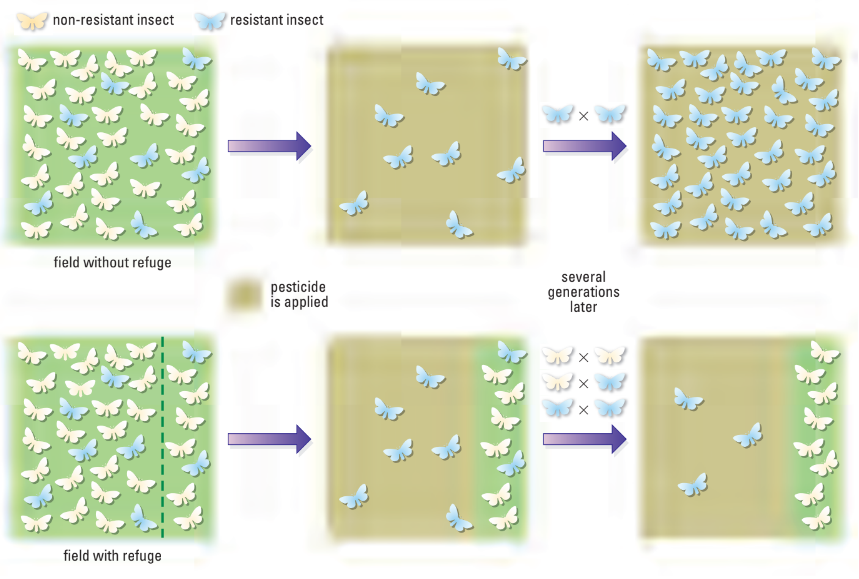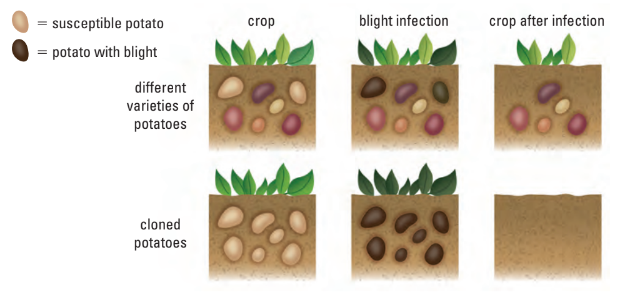C1.7 - Applications of Evolution
Medical Application
Monitoring Mutations in Pathogens
- mutations in pathogens help predict and prevent disease outbreaks
- influenza virus mutates rapidly
- flu causes thousands of deaths each year
- scientists monitor flu strains yearly
- vaccines are made each year to match common strains
- a pandemic is a disease outbreak over a large area
- 2009 H1N1 was a global pandemic
- bubonic plague in 1340s killed one-third of Europe’s population
- no antibiotics existed during the plague
Alleles and Disease Resistance
- bacteria and viruses can mutate and become drug resistant
- some humans naturally resist certain infections
- 20% of Europeans carry D32 allele of CCR5 gene
- D32 allele helped resist past plagues and HIV
- D32 not found in African and Asian gene pools
- malaria increased sickle-cell allele in affected regions
- 1 in 25 Europeans carry cystic fibrosis allele
- 2 copies cause disease with early death
- 1 copy may give resistance to bacterial diseases like cholera and typhoid
- cholera was once widespread in Europe with high fatality
- survival advantage kept cystic fibrosis allele in gene pool
Influencing Disease Frequencies
- natural selection may not affect some disease alleles
- adult-onset diseases appear after reproduction
- Huntington’s disease starts in early to mid forties
- affected individuals may already have passed on the allele
- modern medicine can reduce or increase allele frequencies
- genetic testing can help people avoid passing on disease alleles
- treatments help people with diseases like cystic fibrosis live longer
- longer life allows reproduction and transmission of alleles
Evolution in Agriculture
Slowing Pesticide Resistance
- developing new pesticides is expensive and short-term
- refugia: local environments that have not been affected by regional ecological change
- unsprayed areas in agricultural fields
- sprayed areas kill all but pesticide-resistant insects
- refugia allow both resistant and sensitive insects to survive
- interbreeding dilutes resistance if the allele is recessive
- fewer resistant offspring over generations
- keeps resistance levels low in the population
- reduces the need for new pesticide development
- similar approach used to slow antibiotic resistance in bacteria

Genetic Diversity in Crops
- crops are selected for specific traits
- farmers plant large numbers of the same variety
- Irish farmers relied only on the lumper potato
- lumpers were clones with no genetic variation
- low diversity increases vulnerability to disease
- potato blight destroyed the entire crop in 1840s
- 1 in 8 people died from starvation
- growing diverse varieties could have reduced impact
- single-variety planting still common today
- 1970 US corn crop hit by fungal infection
- 1980s grapevine pest (Phyllorexia vitifoliae) destroyed 800,000 hectares in California
- Cavendish banana is now at risk due to low diversity

Genetic Diversity in Livestock
- artificial selection reduces genetic diversity in livestock
- farm animals bred for specific traits over centuries
- creates genetically uniform breeds like white leghorn chickens
- white leghorns bred for egg production
- reduced diversity makes them vulnerable to disease
- outbreaks can wipe out entire populations
- increasing diversity requires breeding with other breeds
- modern tech like artificial insemination boosts desired traits
- semen from prized males can be frozen and shipped
- allows one male to father many offspring
- maintains traits but lowers genetic diversity within breed

